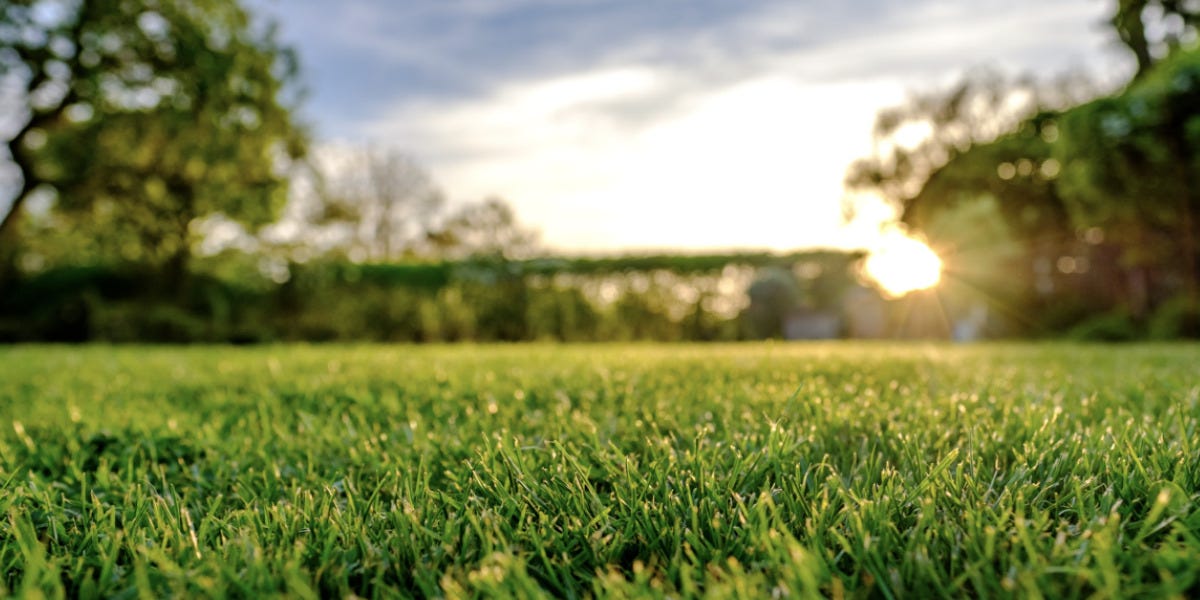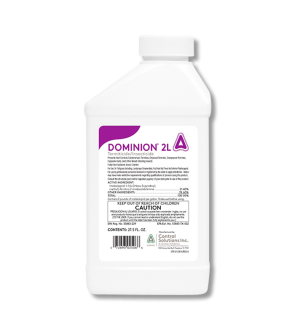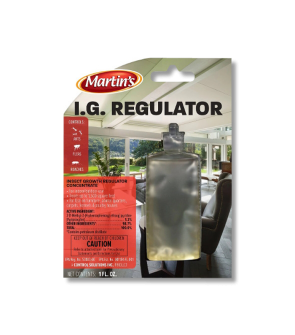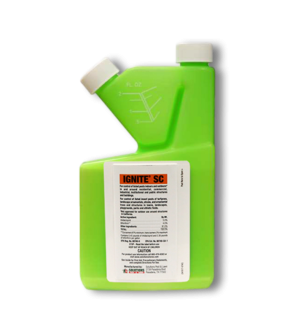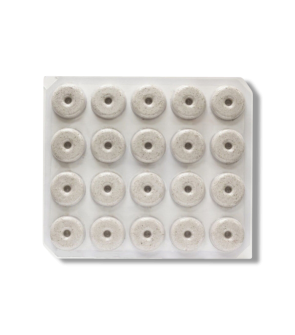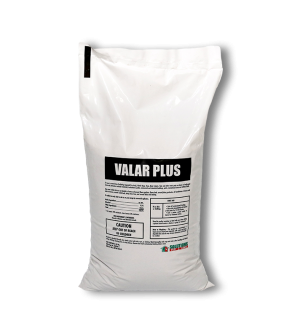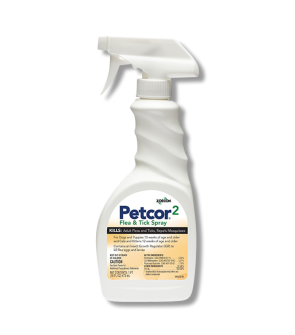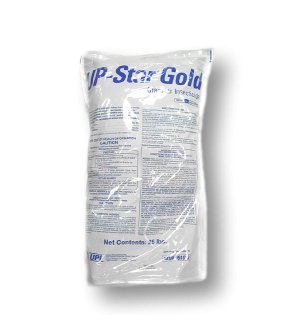Insects in Lawn
Most Effective Products
Common Insects in Lawn
Boasting a well-cared for lawn is nothing to scoff at, but even the best-tended properties can suffer from bugs. Common bugs that attack lawns are ants, chinch bugs, fleas, Japanese beetles, and mosquitoes.
The severity and frequency of pest activities can cause homeowners to become frustrated. For good reason too as they may not be readily observed until damage is extensive in turf and often more difficult to control because of the next generation.
No matter what species of pests are infesting your lawn there is no need to despair. Learn more about these pests and take the following steps to protect yourself and your turf.
If you are not seeing a pest listed here, then contact our customer service team by phone, email, or in-person at one of our store locations for professional recommendations.
Ants
Ants are social pests that live below the soil or in hidden areas in a colony of thousands of individuals. These nests and the ant itself can cause some damages to your lawn. Not to mention the potential for stings or bites from the ant for homeowners walking around outside.
Many types of ants can invade and damage your lawn such as fire ants, field ants, and more.
Identification
Since numerous species of ants can invade your lawn we will focus on general characteristics. This way you can separate ants from other species of insects.
To know which specific ant you are experiencing check our ant control guides for proper identification.
Depending on the species, ants will vary in color from black, brown, red, or yellow. They will have a 3-body segment, a set of antennae, six legs, and are wingless.
Only the ants intended for reproduction aka swarmers will have wings.
Inspection
 Ants will invade any species of turf and will build mounds in undisturbed areas of your lawn. They will prefer to build their nests in areas that are dry, have thin grass, and where the soil is well-drained.
Ants will invade any species of turf and will build mounds in undisturbed areas of your lawn. They will prefer to build their nests in areas that are dry, have thin grass, and where the soil is well-drained.
Treatment
Step 1: Apply Valar Plus
To prevent and control ants in your lawn, perform a broadcast application with Valar Plus.
Valar Plus is a granular bifenthrin based insecticide that is labeled to treat various species of ants and other insects above or beneath lawns and landscape areas.
Determine how much Valar Plus to use by measuring the square footage of the treatment area. To do this, measure the length and width of the treatment area in feet then multiply them together (length X width = square footage).
Apply 2.3 to 4.6 lbs of Valar Plus per 1,000 sq. ft. of lawn. You will need to use a push spreader to cover the entire treatment area.
After applying these granules across your lawn, water them in with 0.25 inches of irrigation.
Do not disturb any ant mounds you come across. Instead, individually treat them with ½ cup of Valar Plus per ant mound. Also, create a 4 foot diameter circle around the ant mound.
Drench the mound with 1 to 2 gallons of water after application.
Step 2: Broadcast Supreme IT

Supreme IT is a broad-spectrum herbicide that will control over 70 types of pests, including ants both indoors and outdoors. When dried, treated areas will repel and eliminate pests for 90 days after application.
For ant control in lawns, use 1.0 fl. oz. of Supreme IT in 1 gallon of water per 1,000 sq. ft. We recommend using a hose-end sprayer for a wider coverage during application.
Spray the top and bottom of turf leaves until wet, but not to the point of runoff.
When you're done with the lawn, you should also spray around the perimeter of your house to keep them from coming inside.
Spray 3 feet up the structure wall and 3 feet out from it on the ground next to it. Make sure to spray around window and door frames, eaves, soffits, around plumbing penetrations, and cracks and crevices.
Do not allow people or pets to enter treated areas until the spray has dried.
Chinch Bugs
With their piercing mouthparts and tendency to sucking juices out of grass makes chinch bugs formidable. Since these pests are most active in summer their activities can easily be confused with drought or heat stress.
The damage will only grow as populations are left untreated and with natural dry weather the grass is more susceptible to death.
Identification
 Chinch bugs are black and white colored, have triangular marks on their backs, and have an orange brown color on their legs. The adult chinch bug are ⅕ of an inch long and are oval-shape.
Chinch bugs are black and white colored, have triangular marks on their backs, and have an orange brown color on their legs. The adult chinch bug are ⅕ of an inch long and are oval-shape.
Inspection
 Chinch bugs can be found anywhere in your lawn that is dry and exposed to the sun. This could be where the lawn meets the driveway or sidewalk.
Chinch bugs can be found anywhere in your lawn that is dry and exposed to the sun. This could be where the lawn meets the driveway or sidewalk.
Treatment
Step 1: Remove Thatch

By dethatching your lawn and aerating it you greatly reduce the chances of chinch bugs.
Step 2: Spread Valar Plus
Since chinch bugs will crawl across the surface of lawns using a granule insecticide will give your greater rate of control. We recommend using Valar Plus.
To get rid of chinch bugs in lawns, use 2.3 to 4.6 lbs. of Valar Plus per 1,000 sq. ft. A push or broadcast spreader will be needed to apply the product.
To apply, walk at an even pace once across the treatment area. Then again, in a separate perpendicular pass to achieve uniform coverage.
After application, water the granules in with 0.25 inches of water.
Step 3: Broadcast Residual Insecticide

To control chinch bugs in lawns with Supreme IT, use 0.5 fl. oz. of product with 1 gallon of water per 1,000 sq. ft. A hose end sprayer will be needed to treat the entire lawn in one swift application.
Thoroughly spray the top and bottom of turf leaves and where you previously applied Valar Plus granules, but do not spray to the point of runoff.
Keep children and pets away from treated areas until the spray has completely dried.
Fleas
Fleas are parasites that are particularly known for their annoying, itchy, and sometimes painful bites. These pests feed on the blood of warm-blooded animals and people if animals are not present.
Sometimes homeowners can have allergic reactions to flea bites whereas others may develop skin infections. Besides a person's health concern, pets are also at risk for loss of hair, anemia, skin infections, and exposure to possible diseases.
Identification

Inspection
Fleas will stay in areas with plenty of shade and are rarely disturbed. In your lawn this could be tall grass, fallen leaves, thatch, overgrown shrubbery, and areas where wild animals travel or where your pets frequently visit.
Treatment
Step 1: Treat Pets

Petcor 2 Flea & Tick Killer is a ready to use flea spray that kills fleas, mosquitoes, and repels mosquitoes from dogs and cats. It also includes a built-in insect growth regulator to prevent pests from maturing into adults.
Treat the sensitive areas of your pet first by spraying Petcor 2 Flea & Tick Killer lightly onto a towel. Wipe the towel gently around your pets eyes, nose, and ears.
Then spray along your pet's coat to the base of the tail while ruffling to achieve best contact with pests. Be sure to also spray the neck, middle and hind quarters, finishing with legs and tail last.
The recommended dose is about 4 squeezes of the trigger sprayer per pound of body weight. Short-haired pets will need less; more spray may be needed for long-haired pets.
In all cases, apply spray until the coat is damp, not saturated.
Use Petcor 2 Flea & Tick Spray only on dogs older than 10 weeks of age and cats older than 12 weeks of age.
Step 2: Use Granular Insecticide
If you plan to control fleas in your lawn then we recommend first applying a granule insecticide for better protection against crawling activity. Valar Plus will last up to 3 months to eliminate fleas that travel in the lawn.
Use 2.3 to 4.6 lbs. of Valar Plus per 1,000 sq. ft. of lawn to control adult fleas and flea larvae.
Since it is a granule insecticide you will need to use a push or broadcast spreader.
Spread this product onto the entire lawn by pushing it once across the treatment area. Then again in a second perpendicular pass to cover the space in the middle.
When the granules have been applied you will then water them in with 0.5 inches of water.
Step 3: Spray the Yard with Residual Insecticide
Another way to further control fleas in your lawn is to apply a residual liquid concentrate with your granule insecticide like Supreme IT.
By using both of these products you can fully control fleas on the lawn and other sites where this pest can infest.
To kill fleas in the lawn and create a perimeter treatment with Supreme IT, use 1.0 fl. oz. of product in 1 gallon of water per 1,000 sq. ft.
To make precise applications, we recommend using a handheld pump sprayer.
Spray your entire lawn on both the top and bottom layer of turf leaves to the point of wet, but not runoff.
Then create a perimeter treatment around your house by spraying 3 feet up the structure wall and 3 feet out on the ground next to the foundation. Also spray around window and door frames, eaves, soffits, and plumbing penetrations.
Japanese Beetles
Both the adult and grub stages of the Japanese beetle are known to be a pest to a number of different plant and lawn species. In their adult stage they will feed on plants grown above ground and during their grub stage feed below the soil on roots.
Because they attack in multiple directions and are not indecisive in their food choice, Japanese beetles are a highly destructive pest.
Identification
Japanese beetles have metallic green bodies with coppery wing covers. Tufts of hair stick out from under their wings at the ends of their backside and along the tips of their abdominal area. They measure between 1/3rd of an inch to 0.5 an inch long.
Japanese beetle larvae are creamy white colored with a brown head and 3 pairs of legs. These pests are c-shaped and measure between 1/8th of an inch up to 1 inch long. They are also different from other grubs with their hairy or spiny appearance.
Inspection

Adult Japanese beetles primarily visit these sites to lay their eggs or breed with other members of its species. The adult Japanese beetle prefers to feed and live on flowers, trees, shrubs, fruits, vegetables, and sometimes turf if these other food sources are low.
Treatment
Step 1: Apply Systemic Insecticide

By doing this your selected systemic insecticide will directly kill Japanese beetle grubs in the soil feeding on treated foliage as well as the adults.
Dominion 2L Insecticide is a systemic insecticide and termiticide designed to control a variety of pests like Japanese beetles and their grubs with the active ingredient imidacloprid.
To kill Japanese beetles in lawns, apply 0.46 to 0.6 fl. oz. of Dominion 2L Insecticide per 2 gallons of water per 1,000 sq. ft.
We recommend using a hose-end sprayer to treat the entire lawn so you do more with less effort. If you have a small lawn less than 1,000 sq. ft. then a handheld pump sprayer would be best.
Start from the back of your lawn then work your way towards the front by spraying the top and bottom of turf leaves until wet. Do not spray to the point of runoff.
Irrigate after application to incorporate this product into the upper soil layer where grubs feed for better contact.
Mosquitoes
For homeowners asking how to get rid of mosquitoes in my backyard or why are there so many in my yard then the answer is simple. Since grass provides cover from the heat and wind mosquitoes like to rest in the tall turf.
Mosquitoes are not only annoying, but they can be dangerous due to their ability to spread diseases with their bites. What's more is they can also spread diseases like heartworm to your pets.
Identification

They also have long legs, narrow wings, and contain a long proboscis that the female uses to pierce skin to feed on blood and the male uses for nectar from plants.
Inspection

They can also be found around wood piles and sites that collect stagnant water like puddles, ponds, bird baths, flower pots, rain gutters, rain barrels, buckets, wet leaf litter, and other sites where moisture collects.
Treatment
Step 1: Remove Standing Water
Mosquitoes favor sites that collect water since they use them to lay their eggs. Also, the larvae will continue to grow in these sites until adulthood.
Any part of your yard that collects water will need to be addressed. This can easily be done by overturning objects collecting water onto ground or filling in parts of your lawn that slopes.
For water sites that cannot easily be removed like ponds, then we suggest using BTI Mosquito Dunk.
BTI Mosquito Dunk is an insect growth regulator that can be used in water and on dry land sites that flood. When contacted with water this product will release a bacterium that kills mosquito larvae.
BTI Mosquito Dunks can be broken apart to treat smaller areas, down to 1 quarter of a dunk to treat 1 to 5 square feet of standing water. To treat areas larger than 100 square feet, more than 1 dunk will be required.
This product will continue to float on top of water and work for up to 30 days to control mosquito larvae in water.
Step 2: Control Plant Height
Because overgrown foliage and lawns provide great cover for mosquitoes during the weather and insecticide applications proper maintenance is required.
The shorter the lawn and vegetation the better you can directly eliminate them and deter them from your property.
Mow your lawn to its proper height, which is usually 3 inches depending on the turf species.
Prune branches, stems, and leaves that are excessively long and cast shadows in your turf.
Step 3: Apply Insecticides

A combination of Supreme IT and Martin's IGR Insecticide works wonders on mosquitoes infesting your lawn. Martin's IGR Insecticide is a concentrated insect growth regulator that prevents pests like mosquitoes from growing into adulthood.
Apply 1 fl. oz. of Supreme IT and 0.67 fl. oz. of Martin's IGR Insecticide per gallon of water per 1,000 sq. ft. of lawns, ornamentals, and exterior perimeter surfaces of your home.
Use both of these products together in a hose end sprayer. Keep in mind that Martin's IGR Insecticide cannot be used on its own and must be mixed with an adulticide like Supreme IT to control mosquitoes.
Spray the top and bottom of turf and ornamental leaves to the point of wet, but not runoff.
To make a perimeter application around your home, begin by spraying 3 feet up the structure and 3 feet out on the ground next to it. Be sure to also spray around window and door frames, plumbing penetrations, and cracks and crevices in the foundation wall.
Key Takeaways
Common Pests in Lawns
- The most destructive or common bugs to find in lawns are ants, chinch bugs, fleas, mosquitoes, and Japanese beetles.
How to Get Rid of Bugs in Lawns
- The first thing to do is to properly maintain your yard with pruning, mowing, and addressing standing water sites. Next, conduct a broadcast treatment on the lawn and around the perimeter of your home with Supreme IT.
Why Are There So Many Mosquitoes in Your Yard
- Mosquitoes often invade yards with tall turf heights, overgrown shrubbery, standing water in yards, and plenty of food sources from outside trash cans with open lids to ornamentals.
